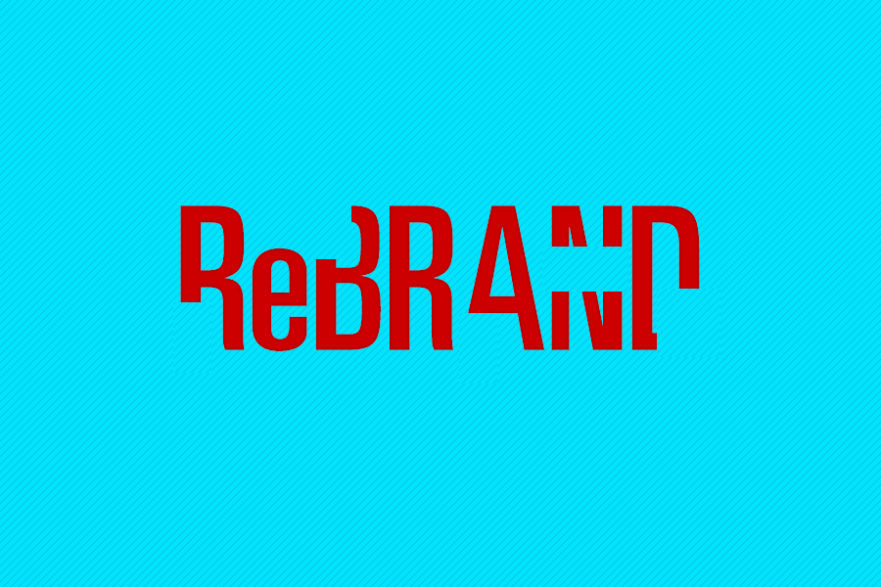Branding has come a long way from the original meaning of marking your cattle. If that were all it meant today, ReBranding would simply mean placing a new mark, or logo, on the visual expressions of your organization. These days, though, Branding means a whole lot more. In turn, ReBranding is more than just a new logo; it is a transformational process that redefines your organization.
Organizations who undergo a ReBrand process make two common mistakes. These mistakes limit or cancel out the very results sought after in the first place.
Mistake #1.
The transformation is visually incomplete.
This is when an organization says, “A new logo and tagline means we’ve ReBranded. Perhaps a new website too, and we’re set.” This is the equivalent of buying a new suit or applying a fresh coat of paint to your car. It’s not a ReBrand, it’s a new face. Simply placing a new logo on all your materials does not ReBrand them.
How to fix it:
Go beyond the logo.
Rebranding doesn’t mean replacing the old logo with a new one.
In order to be visually complete, a complete ReBrand process will usually involve most of the following:
- A new or updated logo/mark
- An updated color scheme and typographic menu
- Consistent usage of the logo, based on the identity standards provided by the agency who helped you craft the new brand identity
- An updated business identity system using not only the new logo, but the new aesthetic details captured when designing the new brand identity
- An online presence that reflects the visual brand transformation. It includes the website(s) the organization uses, all the social media profiles, web ads, co-branded third party services that interact with your online presence, and permission marketing templates that generate your e-blasts
- Updated video intros, or entire videos when they include visual elements that have been part of the brand transformation
All these items should be designed either solely by or in collaboration with the agency that initiated the ReBrand effort. Doing so will ensure that all iterations align aesthetically with the newly created Brand. Although this is one of the areas that is most commonly ignored, it makes a great deal of difference.
As an organization undergoes a ReBrand process, creativity should be strongly tempered with the discipline of staying true to and serving the Brand. The questions should be, “What is best for the brand?” and “What strengthens the brand?” rather than “What do I like?”
Mistake #2.
The transformation is only aesthetic.
This is when the ReBrand efforts only apply to visual expressions of the Brand. It’s easy to make this mistake when ReBranding is regarded as a function of marketing instead of business. Properly updating all materials with the ReBranded identity will drastically improve your audience’s perception of your organization, but that’s only the beginning.
Extending the new Brand into areas such as message, positioning, customer experience, team values, and actual behaviors slowly causes a transformation that truly changes the business from the inside out. In this sense, the visual transformation announces the real organizational transformation, acting as a glimpse of what it envisions it will ultimately become.
How to fix it:
Go beyond the visual dimension.
Rebranding shouldn’t stop with the corporate visuals.
Even if an organization is disciplined enough to carry out a visually complete ReBrand, the transformation has to be more than meets the eye in order for it be impactful. The ReBrand process should include:
- Integration with organization’s vision and mission
- Development from the Brand DNA and Values
- An influence on the dialogue with clients and within the team
- An impact on behaviors and expectations
- An effect on the hiring, advancement, and firing process, as well as individual performance evaluations
- Brand Values championed by the leadership team, yet adopted by the team members who determine the pulse of the organization
- Brand Values that are considered in strategic planning and business development practices
- Social media topics that are fueled by the Brand DNA and the Brand Values
- Brand Values that become connectors with other organizations considered for partnerships, or mergers and acquisitions
- Causes and charity efforts that are influenced and derived by their alignment with the organizational Brand DNA and Values
Every effort made towards such holistic implementation will cause the Brand to grow and stay healthy.
Every effort away from the integrity of the Brand will dilute and weaken its strength.
The goal of the ReBrand effort is to make your organization authentic, clearly expressed, and attractive to the audience it seeks to serve.
If this is your goal, consider us as your partners in achieving it. Let’s talk!
Share this Post

